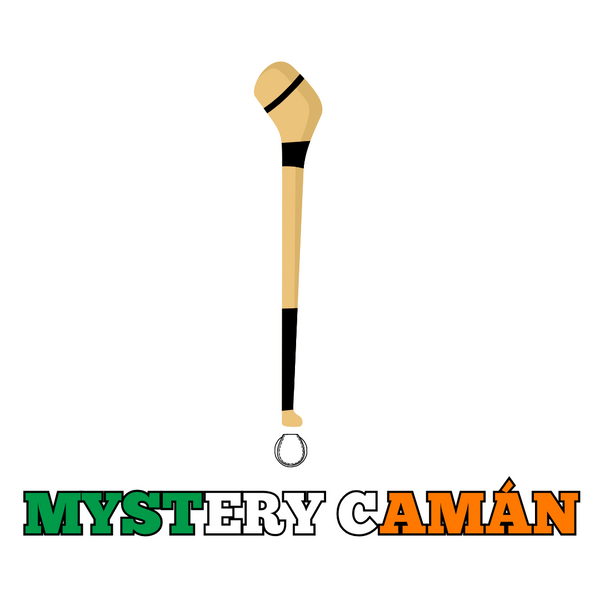The Irish game of hurling is among the oldest, yet its origins remain unclear. The bulk of our information has been obtained from tales and written allusions in ancient manuscripts. It is hard to come by physical objects that directly connect us to the days of the very first game.
The importance of finding ancient hurleys, or camáns, lies in the fact that this sport has always been part of Irish life. They are not mere fragments of wood. They are evidence that the game people play today existed centuries ago, although it may not have looked exactly the same. These discoveries provide a direct connection between the sport and Irish history.
Camán and Its Irish Location
The weapon of the sport is the hurley, also known as camán in the Irish language. All hurlers are familiar with the sensation of it in the hand, the heft of the stick, and the point of impact of the sliotar. Ash wood is used nowadays, and the form is standardized with a broad base and curved handle. However, these standards were not present centuries ago.
The camán used in earlier times was plain and often less polished, but it served the same purpose. What these examples show us is that the concept of hitting a ball with a stick and competing with it has deep roots. In the most primitive times, people shaped wood into a form that could be played with, and it became an Irish tradition in forms that still exist today.
Archaeological Evidence
Most wooden objects from the past have not survived. When timber is exposed to air and water, it decays rapidly. In Ireland, however, bogs have served as natural storage systems, preserving objects for hundreds or even thousands of years. Tools, household objects, and wooden structures have been discovered by archaeologists excavating these sites.
The unearthing of ancient hurleys is one such discovery. These are not ordinary sticks. They are curved and shaped in ways that clearly indicate they were used as hurling tools. Their existence gives us the opportunity to study the skills of people who lived centuries ago and to see how the sport was already part of everyday life.
Earliest Discovery of a Hurley – 7th Century
In Skehacreggaun, near Mungret, Co. Limerick, archaeologists discovered a wooden object dating to the beginning of the 7th century AD. This was perhaps the oldest hurley in Ireland. It may have been used as a camán, as its shape suggests, although there is disagreement.
Some researchers argue it could have been another carved wooden implement, but others believe it bears the marks of a hurley. If it was indeed a camán, it would push the history of hurling back more than a thousand years, making it the oldest material record of the game. Despite the uncertainty, it remains an incredible find, since so few wooden objects from that period have survived in such condition.
The Offaly Find – The Oldest Well-Dated Hurley
Unless the Limerick find is confirmed, the discovery in Offaly is more definite. It was unearthed in a bog at Derries near Edenderry, Co. Offaly. This alder stick was radiocarbon dated between AD 1467 and AD 1531. Now over 500 years old, it is one of the best examples of a medieval hurley.
Unlike the Limerick piece, there is no doubt that it was designed for hurling. Its form, dimensions, and construction are consistent with what we know about the sport. To hold it today is to grasp a direct link with players from half a millennium ago. It reminds us that although the game has changed, the spirit of striking a ball with a wooden stick has remained the same.
What These Finds Tell Us
The finds in Limerick and Offaly reveal that hurling was not only played in recent centuries but has much deeper origins. The craftsmanship of the sticks shows us the skills of their makers. The choice of wood reflects how people adapted to available materials. The Offaly hurley was made of alder, while modern hurleys are almost exclusively made of ash.
These finds also remind us that hurling was woven into community life, not only as recreation but as an identity. Such objects may appear simple, yet they carry meaning far beyond their form. They confirm that the game has been part of Irish culture for far longer than many had imagined, while also offering clues to what still remains unknown.
Conclusion
These are not just relics pulled from the ground. It is a fact that hurling has been part of Irish history for centuries—perhaps even longer than written records suggest. The Limerick find may be the oldest hurley known, while the Offaly stick is a well-crafted, solid piece that proves the sport was being played in the 15th and 16th centuries. Together, they form a bridge between past and present players. These old hurleys are not mere objects; they are living evidence that Ireland’s oldest game has not only survived but evolved and continues to thrive. The connection to those long-lost sticks will endure as long as people lift a camán and strike a sliotar.
Experience the true spirit of hurling—get your Mystery Camán today and play with tradition in every strike.

